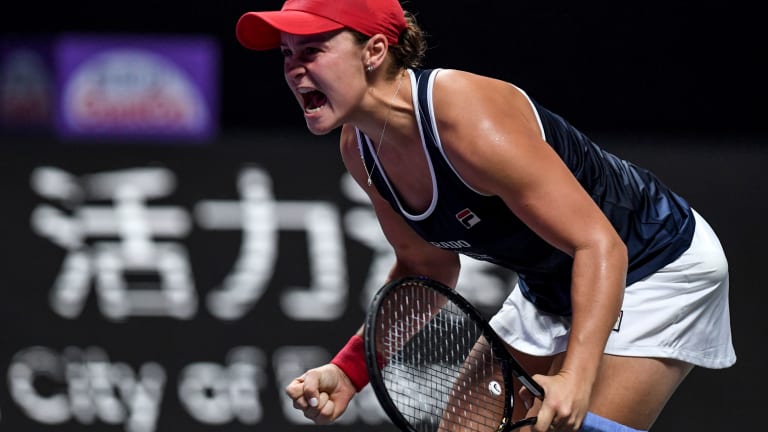WTA Finals
WTA Finals confirms what was suspected: Ash Barty was the best of 2019
By Nov 03, 2019WTA Finals
How Elena Rybakina rose to a "challenging" 2025 with WTA Finals victory
By Nov 09, 2025WTA Finals
Elena Rybakina finishes 2025 resurgence by beating world No. 1 Aryna Sabalenka to win WTA Finals
By Nov 08, 2025WTA Finals
WTA Finals Final: Sabalenka vs. Rybakina | Where to Watch
By Nov 08, 2025WTA Finals
Aryna Sabalenka finds the answers against Amanda Anisimova to reach second WTA Finals final
By Nov 07, 2025WTA Finals
Elena Rybakina rallies to defeat Jessica Pegula in WTA Finals semifinals
By Nov 07, 2025WTA Finals
WTA Finals Day 7: Pegula vs. Rybakina and Sabalenka vs. Anisimova | Where to Watch
By Nov 07, 2025WTA Finals
"I feel like I belong": Amanda Anisimova builds on career breakthrough at debut WTA Finals
By Nov 06, 2025WTA Finals
Aryna Sabalenka eliminates Coco Gauff from WTA Finals, joins Jessica Pegula in semifinals
By Nov 06, 2025WTA Finals
WTA Finals Day 6: Pegula vs. Paolini and Sabalenka vs. Gauff | Where to Watch
By Nov 05, 2025WTA Finals confirms what was suspected: Ash Barty was the best of 2019
In recent years, the WTA's season finale has given us surprise winners, but that wasn't the case in Shenzhen this time around.
Published Nov 03, 2019
Advertising
WTA Finals confirms what was suspected: Ash Barty was the best of 2019
Advertising

WTA Finals confirms what was suspected: Ash Barty was the best of 2019
© AFP via Getty Images
Advertising

WTA Finals confirms what was suspected: Ash Barty was the best of 2019